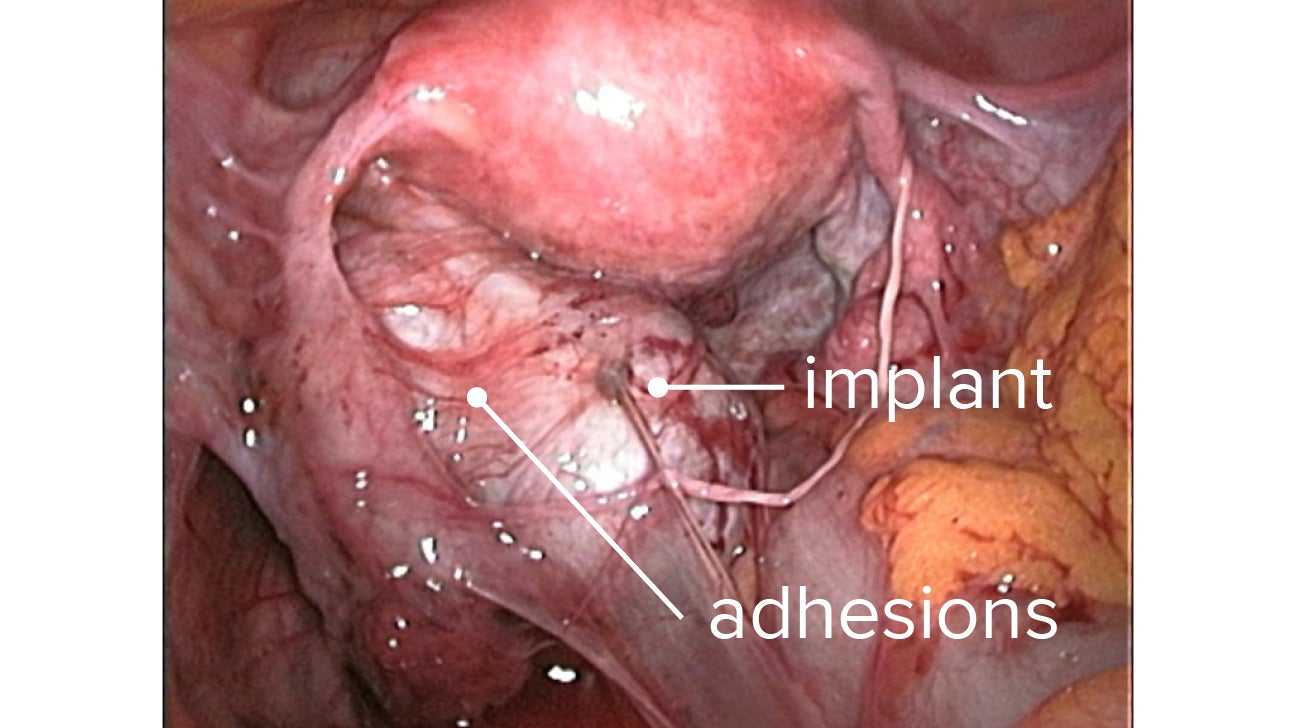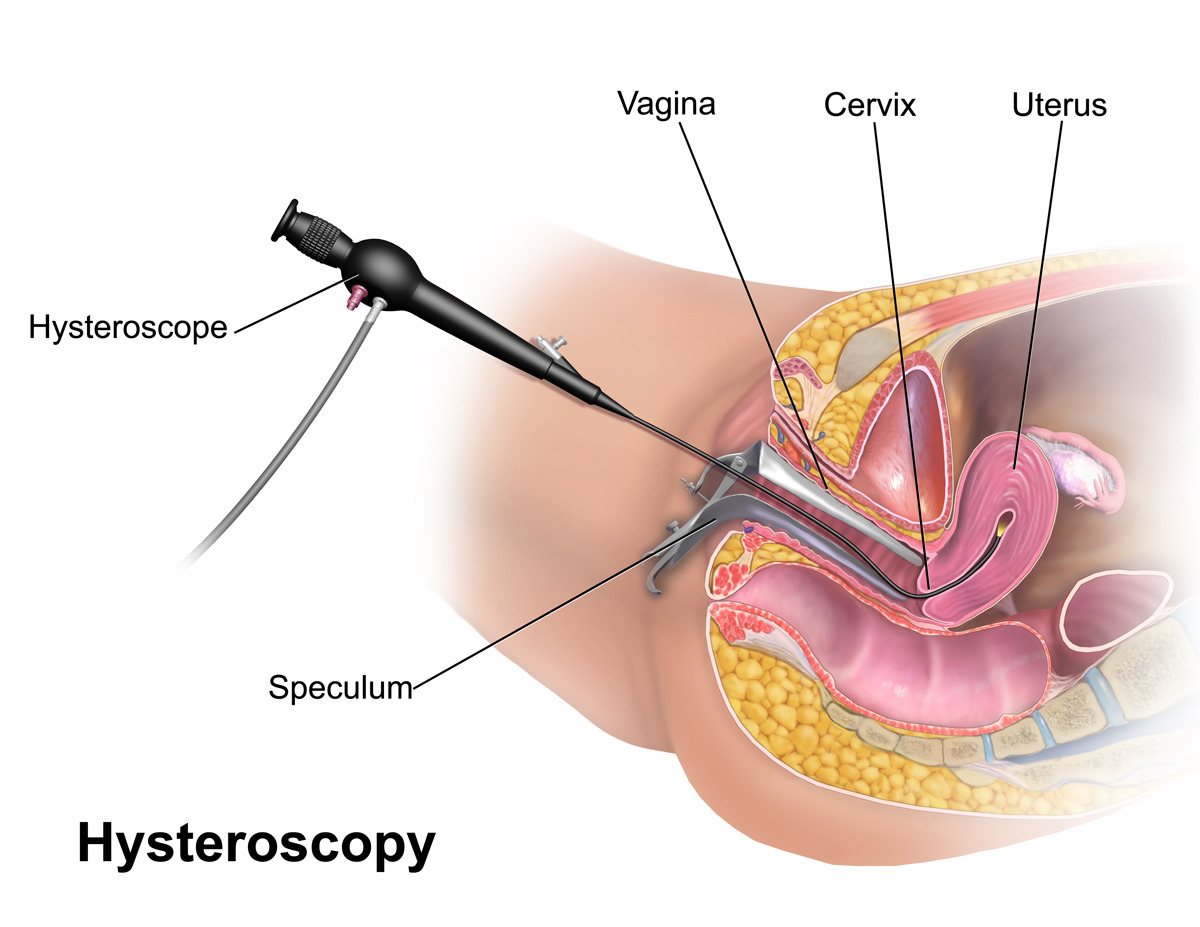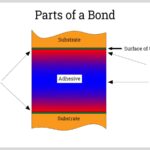Adhesive Disease is a medical condition in which there is an abnormal connection or sticking of two or more organs or body parts. This process is also known as adhesion formation. It is a common complication of many abdominal and pelvic surgeries. Adhesions can form within organs, between organs, or between organs and the abdominal wall. They may cause pain and restrict organ movement and functioning.
Adhesions can also cause intestinal obstruction, infertility, and chronic abdominal and pelvic pain. Adhesive Disease is caused by the abnormal healing of tissues due to inflammation or irritation. This can be caused by infection, trauma, or surgery. It can also be caused by endometriosis, radiation therapy, or chemotherapy. Treatment of Adhesive Disease may involve medications to reduce inflammation and pain, physical therapy, or surgery to remove adhesions. Surgery may be needed to restore normal organ functioning and reduce pain. Adhesive Disease can cause serious health problems and it is important to be aware of the symptoms and seek immediate medical attention if you are experiencing any signs or symptoms of this condition. Early diagnosis and treatment can help prevent further complications.
What is pelvic adhesive disease

Adhesive disease is a condition where tissue in the abdomen (abdominal cavity) becomes inflamed and sticks together. Pelvic adhesive disease specifically affects the pelvic area, which includes the reproductive organs, urinary tract, and pelvic bones. Symptoms of pelvic adhesive disease can include chronic pelvic pain, difficulty urinating, and difficulty conceiving. In women, pelvic adhesive disease can be caused by endometriosis, pelvic inflammatory disease, and surgical operations, such as Caesarean sections. In men, the condition can be caused by prostate surgery.
Diagnosis of pelvic adhesive disease is done by a physical examination, imaging tests such as ultrasound and MRI, and a laparoscopic procedure. Treatment of pelvic adhesive disease can include medications, physical therapy, and, in some cases, surgery. Surgery is usually the last resort and is used to cut the adhesions and restore normal anatomy. This can also help relieve pain and improve fertility. It is important to note that pelvic adhesive disease can be a long-term condition, and it is best to be monitored regularly by a doctor. With proper treatment and follow-up, the condition can be managed and symptoms can be reduced.
How to treat adhesions without surgery?
Treatment for adhesive disease without surgery is possible, but it depends on the severity of the condition. To start, lifestyle changes can help reduce the pain associated with adhesions. Regular exercise, stretching, and yoga can help loosen adhesions and reduce the pressure on affected organs. It’s also important to practice good posture, as this can help reduce the amount of stress placed on the abdominal area. Additionally, reducing inflammation can help reduce adhesions and the pain associated with them.
Eating a healthy diet, consuming anti-inflammatory foods, and taking supplements like fish oil, turmeric, and ginger can help reduce pain and inflammation. Heat and cold therapies, such as hot compresses, cold compresses, and alternating hot and cold baths may also be helpful. These therapies can help reduce inflammation and pain associated with adhesions. Finally, medications like nonsteroidal anti-inflammatory drugs (NSAIDs) and muscle relaxants may be prescribed to help reduce pain or inflammation. Additionally, physical therapy may be recommended to help reduce pain and inflammation associated with adhesions. Overall, adhesions can be treated without surgery if lifestyle changes and treatments are followed properly. With the right treatment plan, adhesive disease can be managed and the pain associated with it can be reduced.
What to know about pelvic floor dysfunction?
It can cause pain, pressure, and other symptoms. Pelvic floor dysfunction is a disorder that can be caused by adhesive disease. Pelvic floor dysfunction can occur when the pelvic floor muscles are too tight or too weak, which can lead to pain and discomfort. It can also cause urinary and fecal incontinence and difficulty in having sex. Other symptoms include difficulty emptying the bowels or bladder, constipation, and a feeling of heaviness or pressure in the pelvis.
In some cases, pelvic floor dysfunction can be corrected through physical therapy and exercise. Physical therapy can help to strengthen the pelvic floor muscles and improve their flexibility. Exercises such as Kegels and pelvic floor stretches can help to reduce symptoms and improve overall pelvic health. If physical therapy and exercise do not improve the symptoms of pelvic floor dysfunction, medication or surgery may be necessary. Surgery is usually done to repair muscles or to remove scar tissue. Medication may also be prescribed to help reduce pain and inflammation. It is important to talk to a doctor if you experience any symptoms of pelvic floor dysfunction. A doctor can evaluate your condition and recommend the best treatment options for you. With the right treatment, pelvic floor dysfunction can be managed successfully.
What causes pelvic adhesive disease

This disease affects the organs in the pelvic area, such as the bladder, uterus, rectum, and small intestine. Symptoms of adhesive disease can include severe abdominal pain, pressure and bloating in the abdomen, urinary problems, and difficulty with bowel movements. The cause of pelvic adhesive disease is usually related to a previous pelvic surgery. During surgery, areas of the body are often manipulated and disturbed, causing scar tissue to form which can stick to intestines or other organs. In some cases, an infection can cause pelvic adhesive disease by causing inflammation and scarring.
Endometriosis, a condition where the lining of the uterus grows outside the uterus, can also cause pelvic adhesive disease. Endometriosis can cause inflammation and adhesions, which can lead to pelvic pain, infertility, and other difficulties. In some cases, cancer can cause pelvic adhesive disease. Cancer cells can cause inflammation and scarring, which can lead to pelvic adhesive disease. In some cases, cancer cells can grow around the intestines and cause adhesions to form. This can lead to complications such as bowel obstruction.
What are pelvic adhesions caused from?
This scar tissue binds pelvic organs together and can cause significant pain and dysfunction. It is most commonly caused by endometriosis, surgery, and pelvic inflammatory disease. The symptoms of pelvic adhesions are wide-ranging, but the most common include pain in the pelvic area, pain during intercourse, difficulty emptying the bladder, and infertility. Additionally, some individuals may experience constipation, irregular menstrual cycles, and pelvic organ prolapse. In order to diagnose adhesive disease, doctors will perform a physical examination, as well as imaging tests such as ultrasounds.
Treatment can vary depending on the severity of the condition, but may include medications, physical therapy, and/or surgery. Surgery is usually used to treat severe cases of adhesive disease and involves using a laser to cut the scar tissue and separate the organs. This is a delicate process, however, and requires expertise to minimize the risk of damage to the surrounding organs. Adhesive disease can be a debilitating condition that affects an individual’s quality of life, but with the right diagnosis and treatment, it can be managed. It is important to speak to your doctor if you experience any of the symptoms associated with this condition, to ensure you receive the proper care.
How do I know if I have pelvic adhesions?
It can occur for a variety of reasons, and the symptoms can vary widely depending on the extent of the adhesions. The most common way to know if you have pelvic adhesions is to experience symptoms such as pain, bowel obstruction, and infertility. Pain can range from mild to severe and may become worse with movement or activities such as walking, sitting, or standing. Bowel obstruction occurs when the adhesions block the normal flow of the intestines. This can cause bloating, cramping, nausea, and vomiting.
Additionally, infertility may result from adhesions blocking the reproductive organs. Other potential signs of pelvic adhesions include tenderness in the pelvic area, feeling of fullness in the abdomen, difficulty passing urine, and heavy menstrual bleeding. Your doctor may also run tests such as an imaging scan, laparoscopy, or pelvic exam to look for the presence of adhesions. If you think you may have pelvic adhesions, it is important to speak with your doctor. Treatment will depend on the severity of the condition, but may include surgery to remove the adhesions or medications to control pain and inflammation. With proper diagnosis and treatment, many people can live healthy and symptom-free lives.
How do you prevent pelvic adhesions?
This can lead to pain, infertility, and complications during pregnancy. The best way to prevent pelvic adhesions is to avoid surgery or other invasive procedures in the abdomen and pelvis if possible. When surgery cannot be avoided, there are a few steps that can be taken to minimize the risk of adhesions. Your doctor may use a product such as hyaluronic acid or carboxymethylcellulose (CMC) to coat the organs during surgery. This helps to reduce friction between them and prevents scar tissue from forming.
Limiting the amount of time the organs are exposed to the surgical environment can also help reduce the risk of pelvic adhesions. If the procedure can be performed laparoscopically or endoscopically, this will reduce the amount of time the organs are exposed. Your doctor may also use topical agents such as antifibrinolytic drugs or antiseptics during the surgery to reduce inflammation and reduce the risk of adhesions. It is always important to keep the surgical area clean to reduce the risk of infection, which can further increase the risk of adhesions. Extra care should also be taken to avoid trauma to the abdominal and pelvic organs during surgery.
Do pelvic adhesions go away?
This can be caused by infection, surgery, or injury, and can lead to chronic pelvic pain. The good news is that pelvic adhesions can go away on their own. In some cases, they may slowly be broken down over time by the body’s own healing process. However, this can take a long time, and in some cases, the adhesions may be too severe to be resolved this way. In other cases, treatment for pelvic adhesions may be necessary.
Depending on the size and location of the adhesions, this may involve physical therapy, medications, or even surgery. Surgery is typically used in the most severe cases, and is the only way to completely remove the adhesions. It is important to note that even after treatment, pelvic adhesions may not completely disappear. Even after surgery, some adhesions may remain or come back. However, with proper treatment and management, the discomfort and pain caused by pelvic adhesions can be reduced significantly. Overall, pelvic adhesions can go away, but it depends on the severity and cause of the adhesions. In some cases, the body’s natural healing process may be enough to break down the adhesions, while in other cases, more intensive treatments may be necessary. In any case, seeking medical attention is the best way to make sure the adhesions are properly dealt with.
What causes adhesion disease?
This can cause the intestines to stick to each other and to organs in the abdomen, leading to pain and possible blockage of the intestines. Infections and inflammation due to certain conditions such as Crohn’s disease, endometriosis, and diverticulitis can also contribute to the development of adhesive disease. Certain medications, such as chemotherapy and radiation, can cause inflammation of the abdominal lining, resulting in the formation of abdominal adhesions. Trauma and injury to the abdominal wall can also cause the formation of scar tissue and the development of adhesive disease. This is common after a surgery or an accident, or from a major illness.
In some cases, the cause of adhesive disease is not known, but it is believed that genetics also plays a role. If someone in your family has adhesive disease, there is an increased chance that you may develop it as well. Adhesive disease is potentially serious and can cause pain, discomfort, and other digestive problems. Fortunately, awareness of the condition is growing and treatments are available to help reduce the risk of developing adhesive disease.






